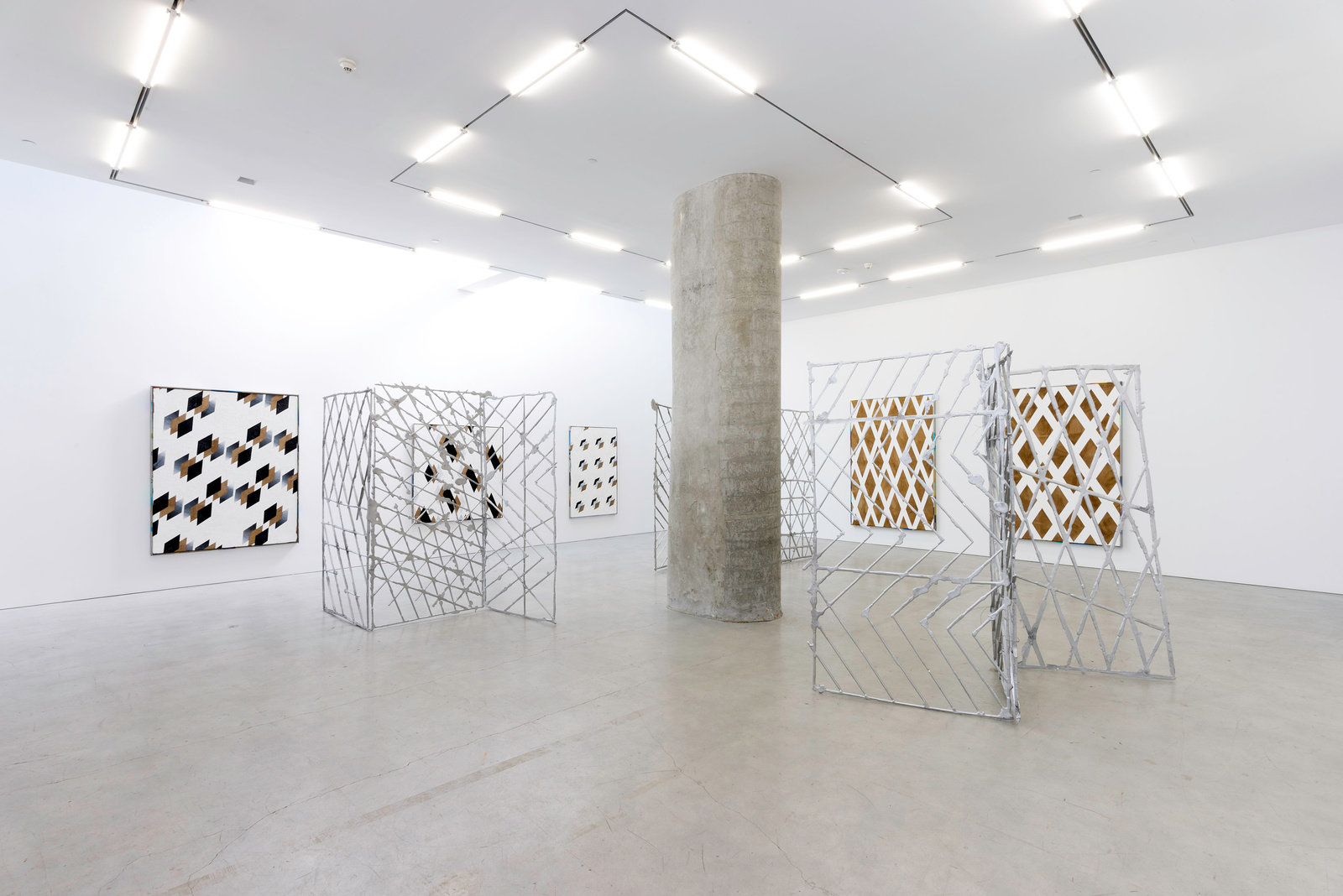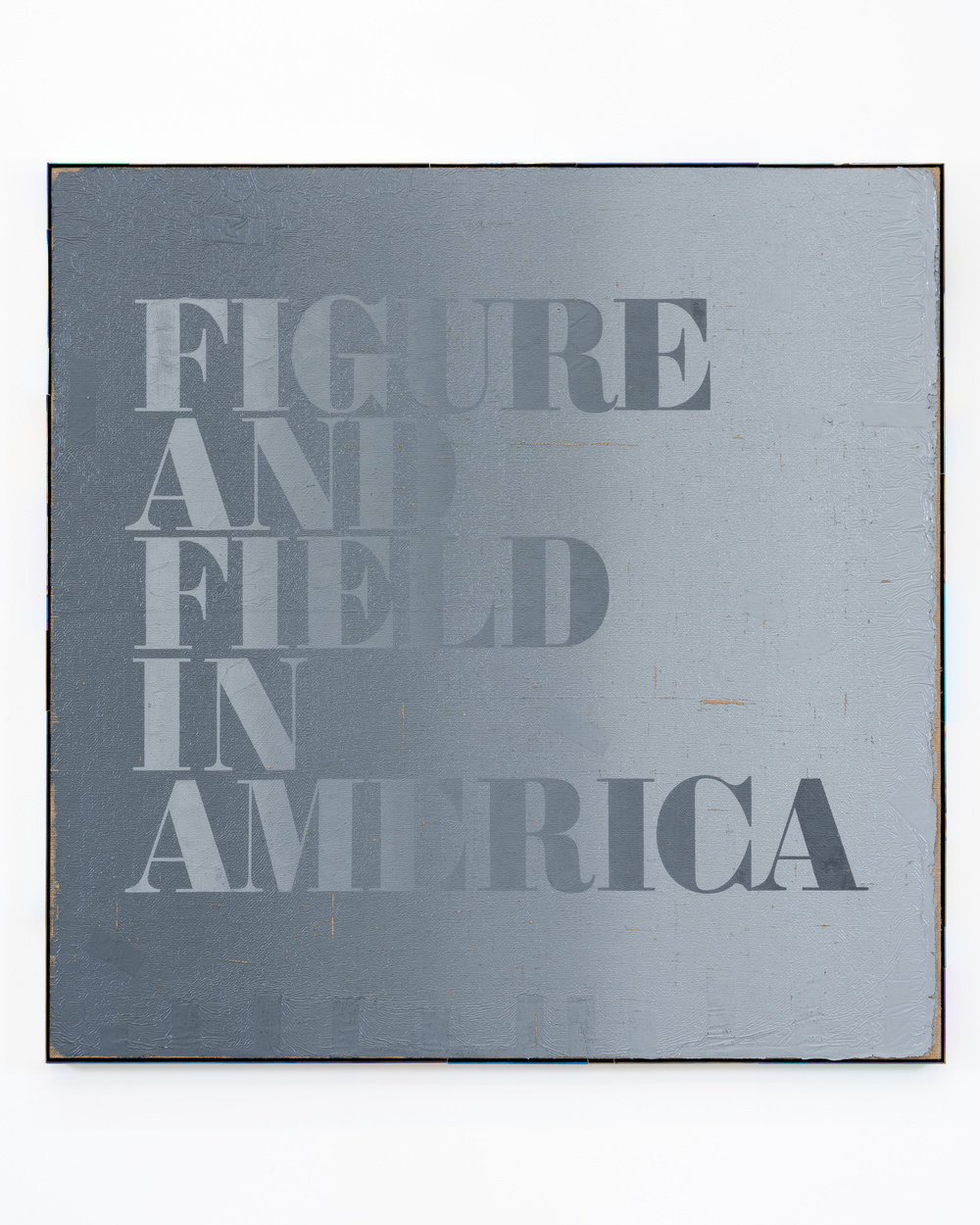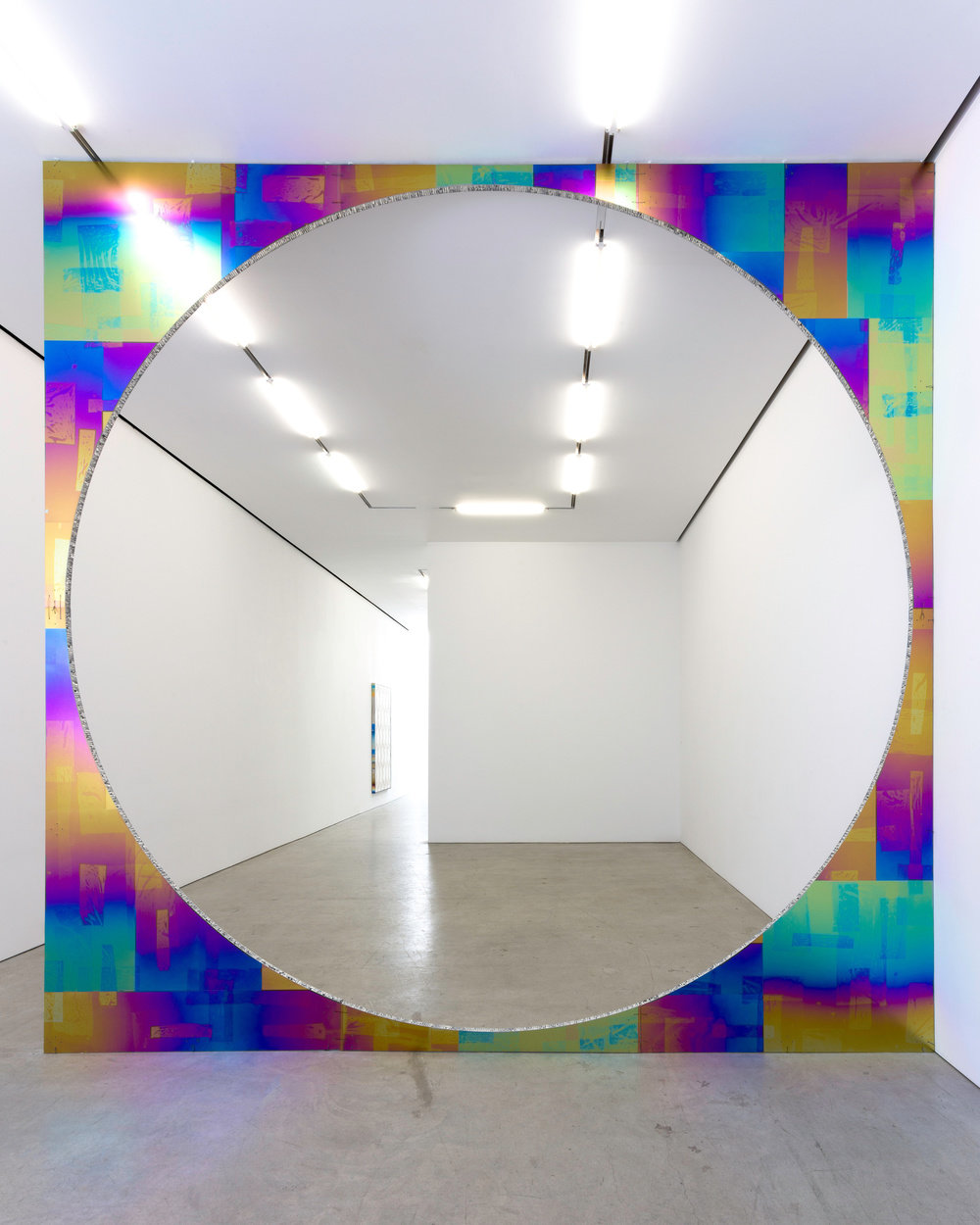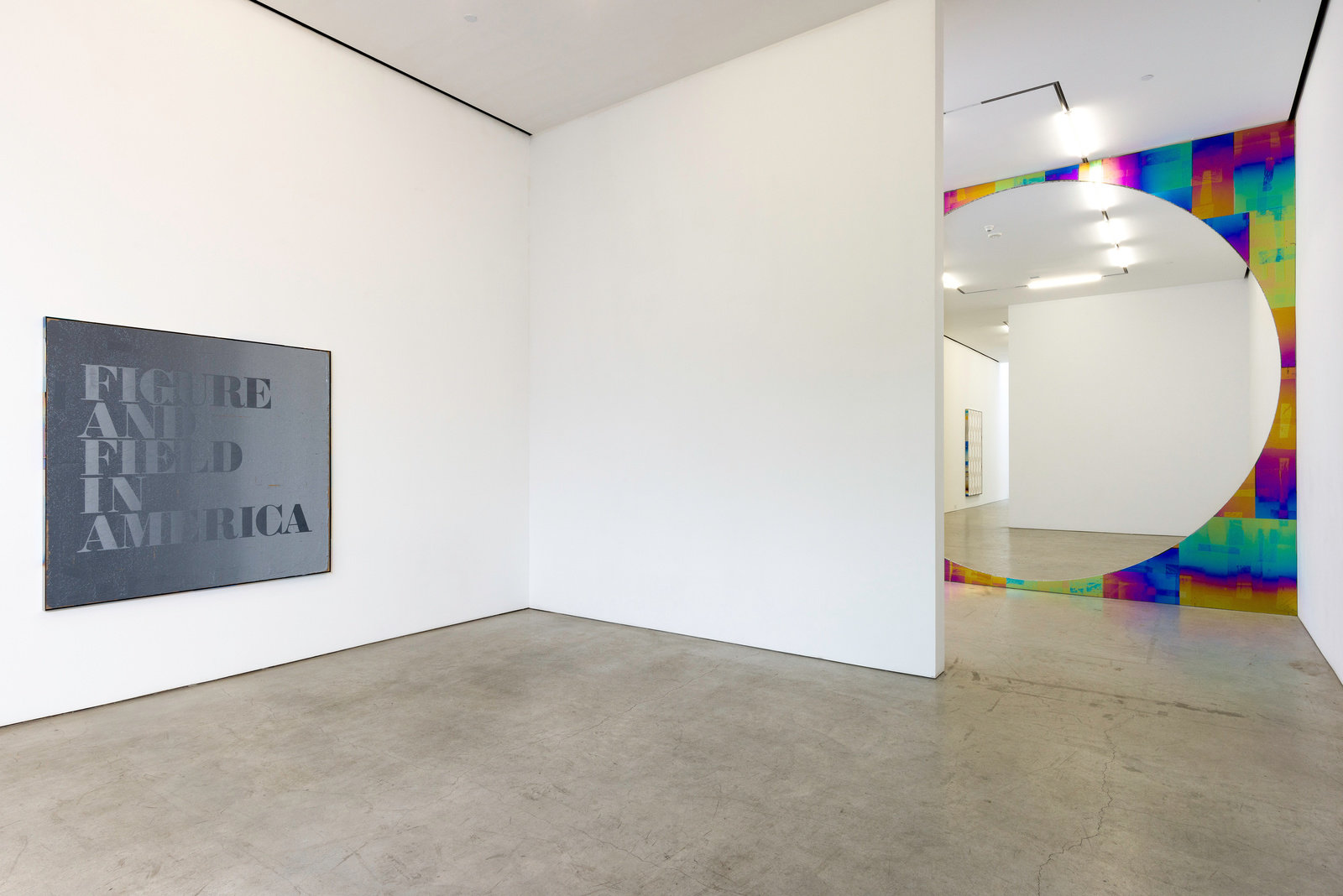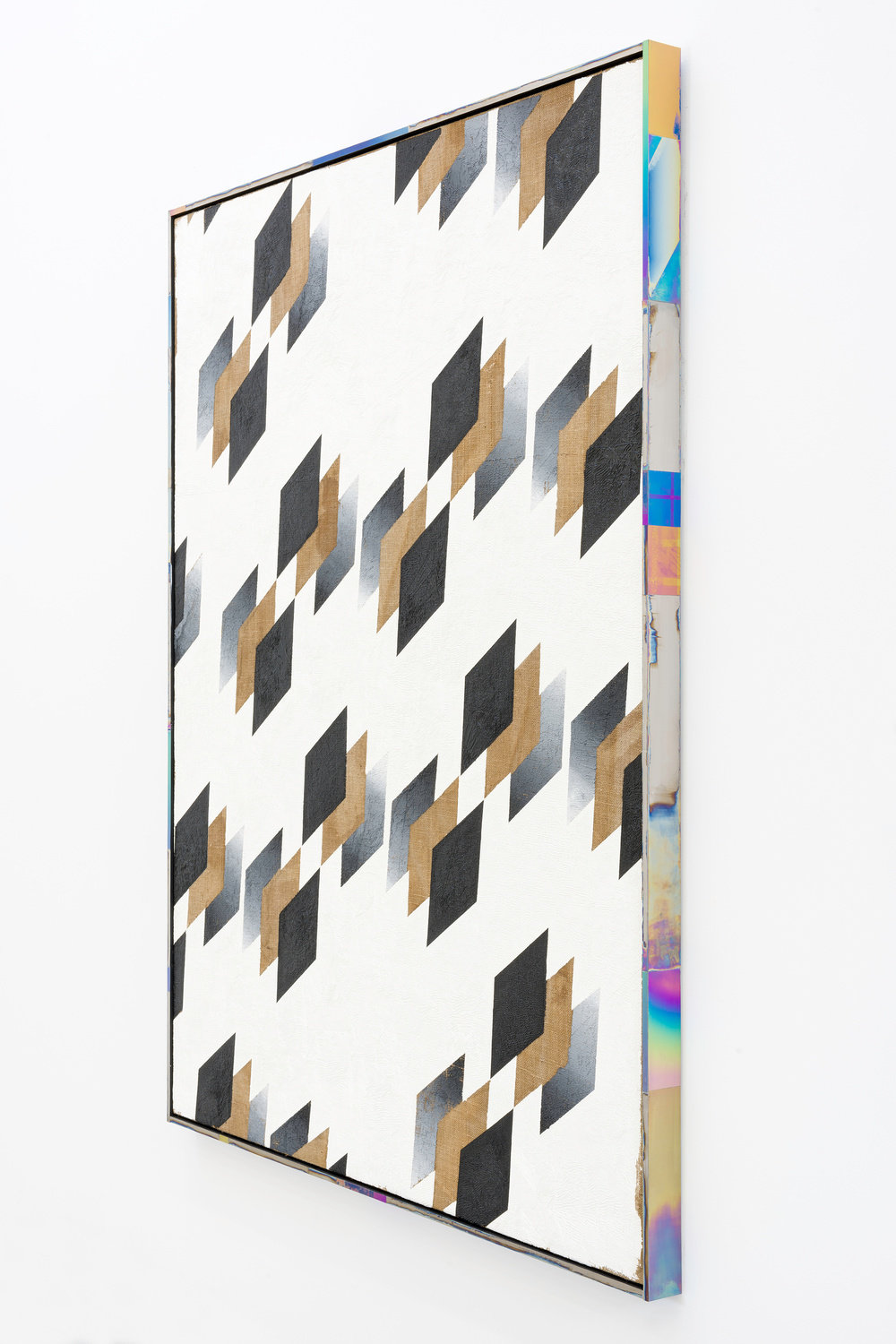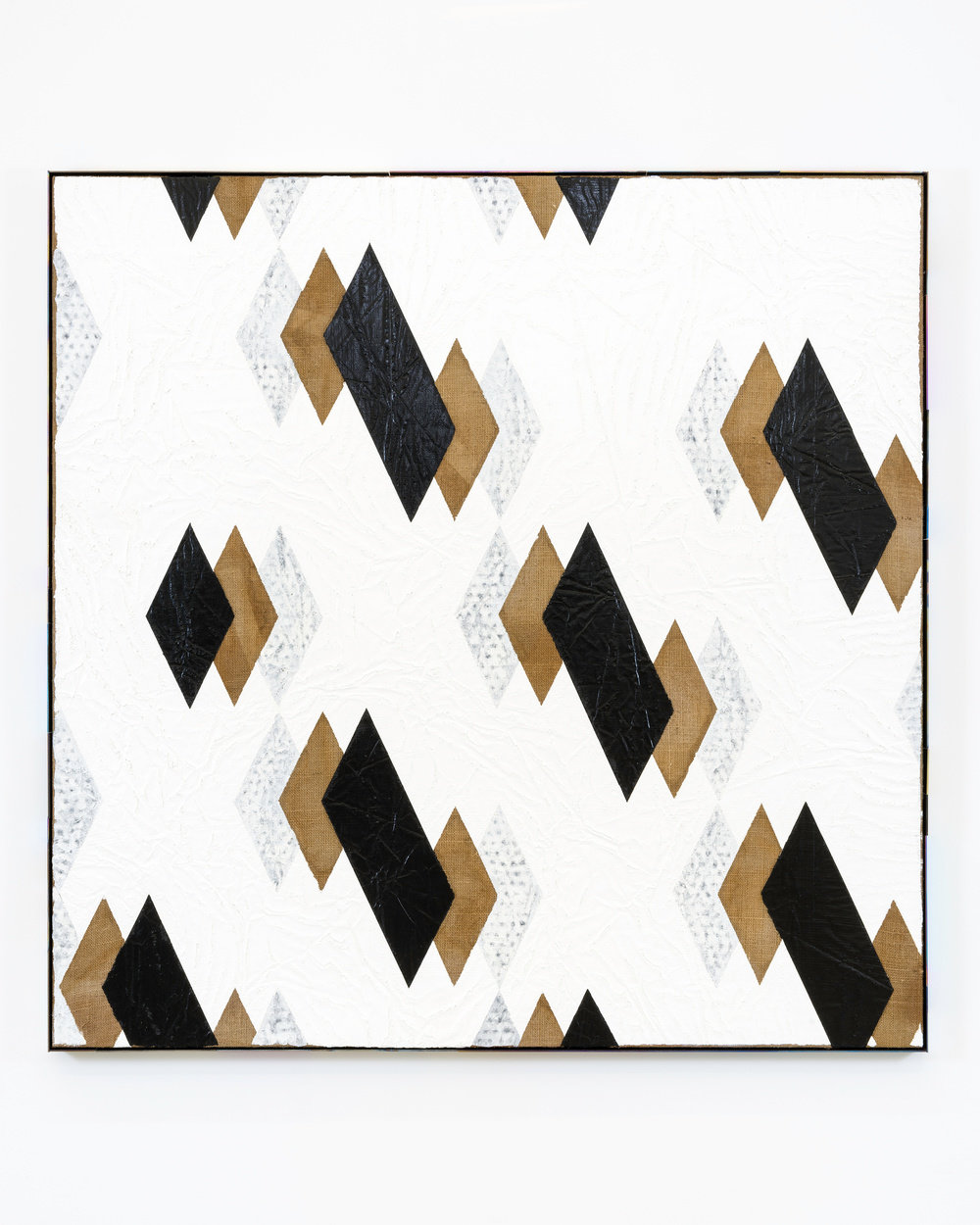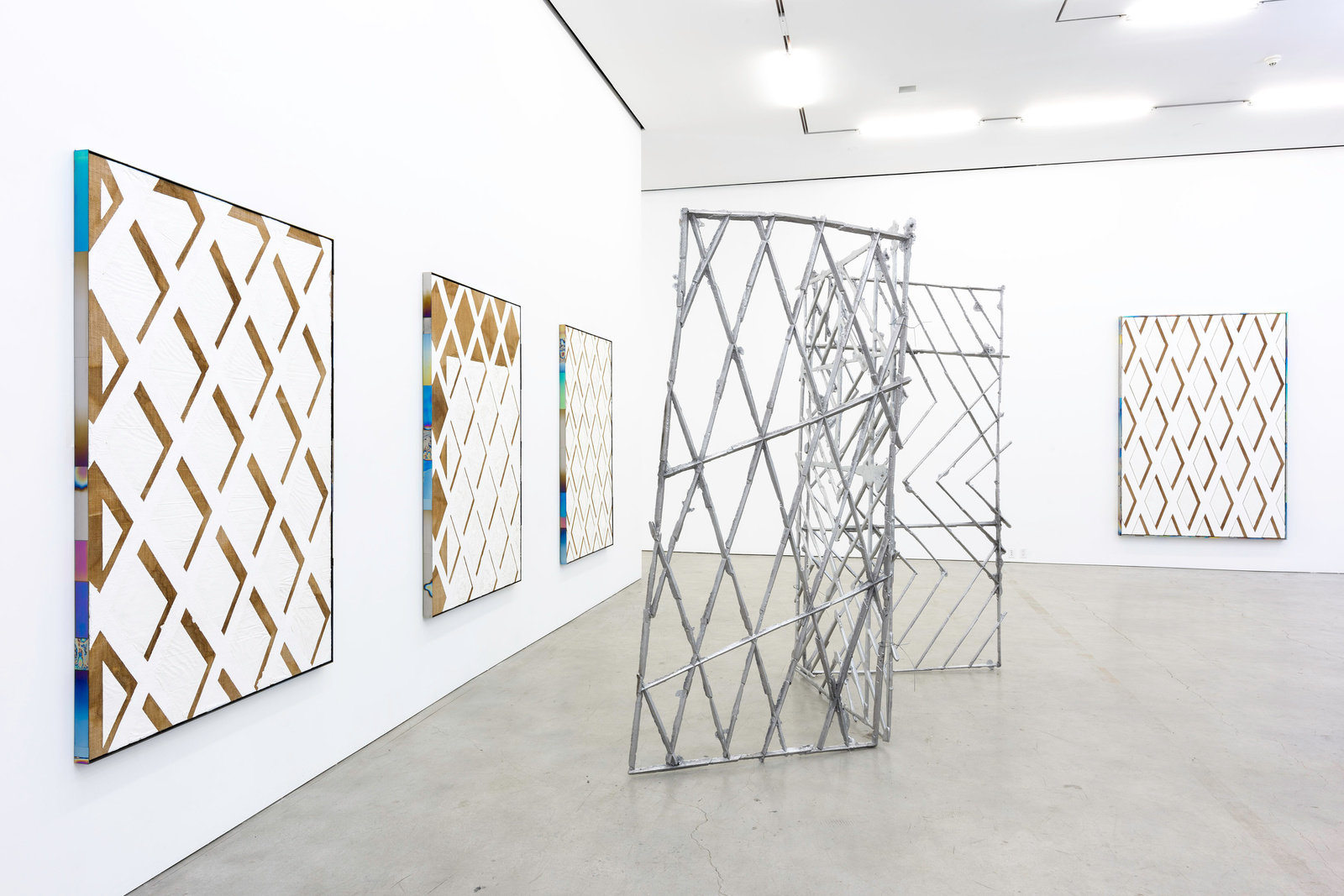For his second solo exhibition with the gallery, Los Angeles-based artist Mark Hagen presents a group of paintings, along with sculptures in anodized titanium and poured aluminum. These new works manifest the artist’s interest in the compression and elasticity of time, the poetic application of archeological methodologies, and the benefits and challenges of control and the lack of it.
The Big Hole is organized around the logic of architectural screens—a porous barrier that controls movement but that remains transparent—an object that is both seen and seen through. Upon entering the gallery, the viewer passes a floor- to-ceiling aperture fabricated from aluminum honeycomb clad in titanium sheets with vibrant color gradients made by incongruously combining soft drinks and electricity. Without using dyes or pigments Hagen’s titanium pieces open the black box of color reveling it as a seamless and fundamental operation of light refraction. On the surface these abstract distinctionless gradients are complicated by real world objects: strips of paper towels soaked in an etching solution that create mirage-like chemical photograms, recording their various positions over multiple “exposures”. Finally the negative space of this sculpture recalls Pores, holes, orifices, and semi-permeable membranes, amplifying the intention and experience of the accompanying works.
Nearby, Hagen’s paintings are made by pouring latex paint through sun-exposed burlap and onto a variety of textured plastic sheets and packing tape, stratifying the pigments in a makeshift mold, creating an incidental image/object. Masked into various diamond- shapes their repetition mimics the functionality of accordion-like security fencing, with its mutable apertures opening and closing. Also seen here are paintings that incorporate new graphic icons, a representation of the artists’ past painting series, layered and repeated in a rational system of objects. However organized and orderly these graphic icons create a confusion of ground, image, transparency, and object. All of Hagen’s paintings too are conspicuously framed in more titanium, a patchwork of separate rearrangeable pieces, where ironically the expressivity and brush work one might want to find on the surface of the painting can be found.
Similarly, the cast aluminum screens (made from melted down car rims from the streets of Los Angeles where the artist lives and works) can be lashed together and arranged in variable combinations. These, too, have the blurred effect of handmade artifact and high-precision fabrication, the mystical and the matter- of-fact, and the abstract and the actual that haunts Hagen’s work as a whole.
Works
